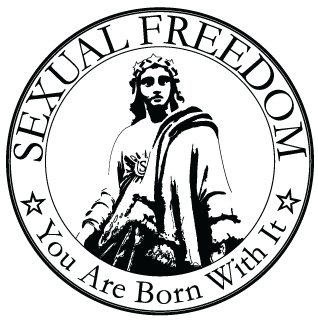For more on Transhuman Erotic Freedom…
También en español In my recent post What is the Name of God? I explained that one must recognize two concepts of deity. One is the absolutely perfect omnipresent, omniscient, omnipotent deity (the omni-cubed god), whose acts in infinite space and eternal time are necessarily uniform and invisible, who putatively makes possible and upholds everything that is or can ever be. We recognize that Love is the best descriptive name we have for this deity. Though no physical image can embody all this represents, an image of Aphrodite/Venus, the classical god of Love, provides a convenient symbol.

The second deity is the agency of both cause and necessity in an evolving universe of space and time. This is the god that creates and shapes the development of finite reality. This is the ongoing expression of the fully integrated deity that in some Transhumanist visions of destiny (Frank Tipler‘s Omega Point or Martine Rothblatt‘s Terasem or the Supreme Being of The Urantia Book) stands at the end of time as a fully integrated mind encompassing all prior consciousnesses of supreme value in the universe, and reaching back through time to assure its own emergence. From the viewpoints of origin rather than destiny, this is the ongoing expression of the creative power that gives rise to all events and occasions that come into being and develop their destinies towards a final supreme culmination in evolved perfection.
John Zebedee was the youngest of Jesus’ inner circle of male disciples (the 12 apostles of Christian legend). He called himself “the disciple Jesus loved best” and much has been made over the exact meaning of this statement, especially in view of Jesus’ other close male associations (John the Baptist, Lazarus, and the youth John Mark, who came to play a major role in the spread of Jesus’ vision in both Rome and Egypt). In any case, of the four authors of the “canonical” legends of Jesus’ life, John Zebedee seems to have most fully grasped the transcendent nature of the divine power he believed incarnate in the human Jesus, as reflected in this opening of his biography of the Jesus he knew and recalled.:
In the beginning was the Word, and the Word was with God, and the Word was God. The same was in the beginning with God. All things were made by him; and without him was not any thing made that was made. (KJV John 1:1-3)
And that pretty well sums up the nature of the finite deity I have identified with the descriptive name Truth. Love is the desire to do good to others. Truth is the power of effective action that takes the inspiration of Love and accomplishes Good and makes Beauty. John identifies the Word as the aspect of total deity represented to earthborn humanity by the person of Jesus as he writes:
And the Word was made flesh, and dwelt among us, … full of grace and truth. (KJV John 1:14)
Though no physical image can embody all this represents, I have suggested that the meme of Hermaphroditus, the classical divine two-sexed child of Aphrodite/Venus and Hermes/Mercury, may provide another convenient symbol for the reality of cosmic Truth as the supreme finite deity, the coordinator of Goodness for the creation of Beauty. I submit that such an image more fairly symbolizes the physical cosmic Truth, the genuine Word of god than any conventional image of a cruelly murdered divine avatar.

Most assume that Truth knows no gender. Nothing could be further from the truth, for Truth must encompass all genders, all sexes, and all possible actions, manifestations, and phenomena that are Good manifestations of Love, even objects of Beauty.
The classical deity Hermes/Mercury is the god of action. In Hermaphroditus, the powers of the god of Love are united with the god of action to embody an objectively androgyne deity able to shape action through will, through Word, to the service of Good. And this same Hermaphroditus is naturally portrayed as androgyne. I have explained in my rather long paper, Why We Are All Transgender, why the cosmic forces that govern our planet and commune with our persons are perceptible as intergender, transgender, or pan gender influences—that is, having the nature we recognize as androgyny—the combining of masculine and feminine forms of conventional gender expression.
Thus the meme of Hermaphroditus serves as an image of Truth, reminding us of the need to acknowledge the unification of all dual things, to transcend meaningless dichotomy, and to function both as a receiver and giver of True Love in all its forms. Furthermore, this meme represents a genuine cosmic reality that, even today, breaks out in the intergender impulses of people most sensitive to the intuitive appreciation of the full character of Truth and its potentials for expression in human lives. And that sensitivity is the great liberator that has always given us the true leaders of society, the Lesbian, the Gay, the Bisexual, and the Transgender, who seek to incarnate the nature of Truth.
Though Truth is a deity of action, finding expression of the desires of Love in doing Good and making Beauty, Truth is also the True Will of Love. Truth is the singular expression of the True Will, the Word, of God to our universe. Thus, Truth is the best descriptive name for the deity of finite time and space, and this deity is the Word of Love to our universe, the expression in time and space of the will of Love.
